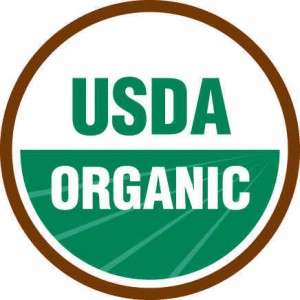Organic Agriculture and Water Sub-Indicator
Organic agriculture is a method of agriculture designed to limit its environmental and ecological impacts. Organic agriculture methods can include tillage and cultivation practices for soil and nutrient management, crop covering and rotation, the significant reduction or elimination of synthetic products like antibiotics, hormones, and pesticides, and the use of organic seed and feed all of which can improve soil and water quality and limit the release of pollutants into the environment.
Because of this, it is assumed in this index that increased organic agriculture production results in decreased water pollution potential compared to conventional farming. Based on this assumption, states with the higher percentage of organic farms and organic sales were considered to have reduced water pollution potential due to their overall increase in organic farming as compared to the total percentage of farms and sales in each state.
2012 USDA Census data was used determine organic production and sales in each state. To determine the percentage of organic farms in each state, USDA certified organic farms, USDA exempt organic farms, and farms with acres transitioning to organic production were summed and then divided by the total farms in each state. To determine the percentage of organic sales, the amount of organic sales was divided by the market value of agricultural products sold in each state. The results were then ranked and averaged between both categories to come up with an overall ranking. It is advised to develop a quintile grading scale as more states are added in the index which can be based on the highest and lowest percentages within states in the US.
Preview of Results
Metric Findings
-
Assumptions:
- It was assumed that a higher percentage of organic farms and organic sales in a state result in less water quality impacts from agriculture
-
Findings:
- Due to its limited employment the overall impact of organic agriculture on water quality is low.
- The 10 index states account for 32% of all organic farms in the United States.
- Only 3 out of the 10 index states had 1% or more of organic farms when compared to total farms within their state.
- Washington had the highest percentage of organic farms and Wisconsin had the highest percentage of organic sales. The states tied for first when weighting the two categories.
- Indiana finished 7th in percentage of farms, 6th in percentage in sales, and 6th overall
-
Policy Considerations:
- This metric did not provide an overview or analysis of policy or regulations relating to organic agriculture.
- Further expansion of this metric could investigate adding a policy component.
- While organic agriculture has grown, states should consider regulations, policies, and incentives to encourage or require more organic agriculture.
For more information on State Sustainability Index’s Organic Agriculture and Water Quality Metric, click here to find the complete SustainIN Capstone Report

